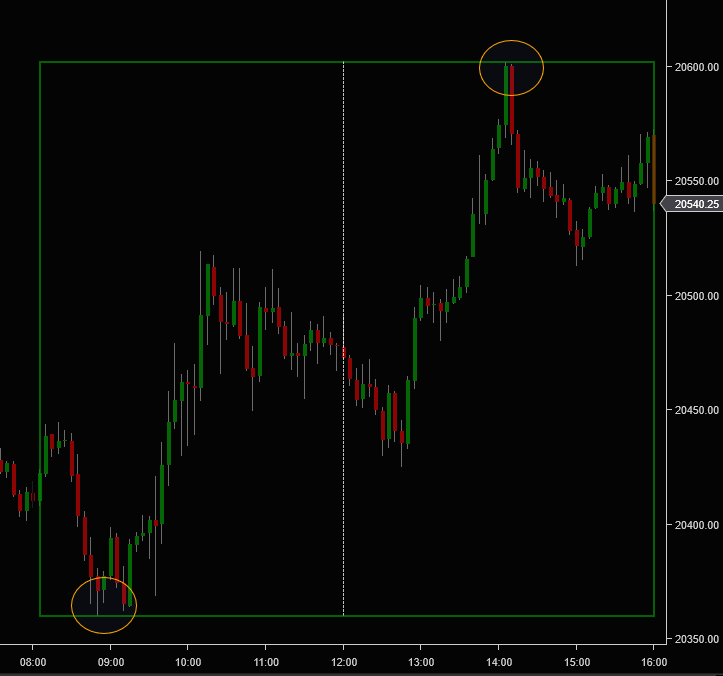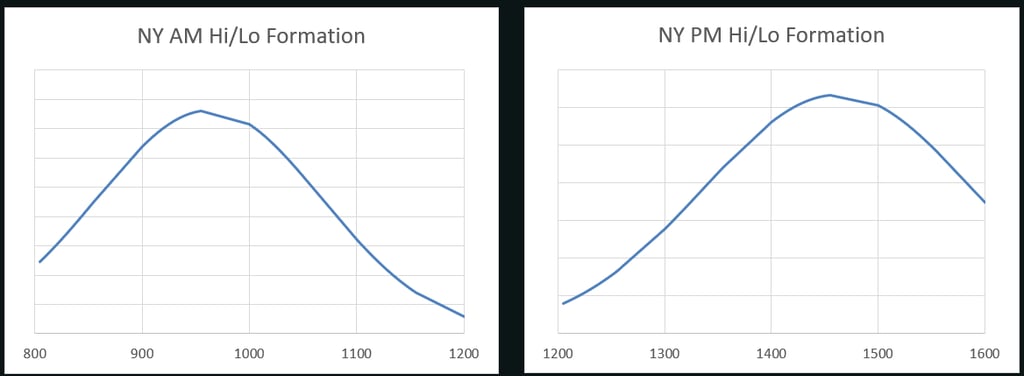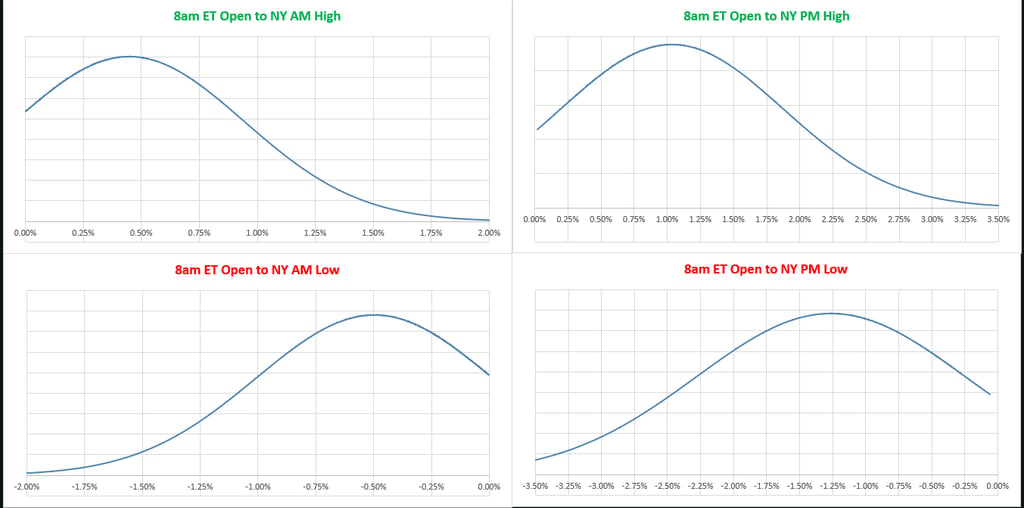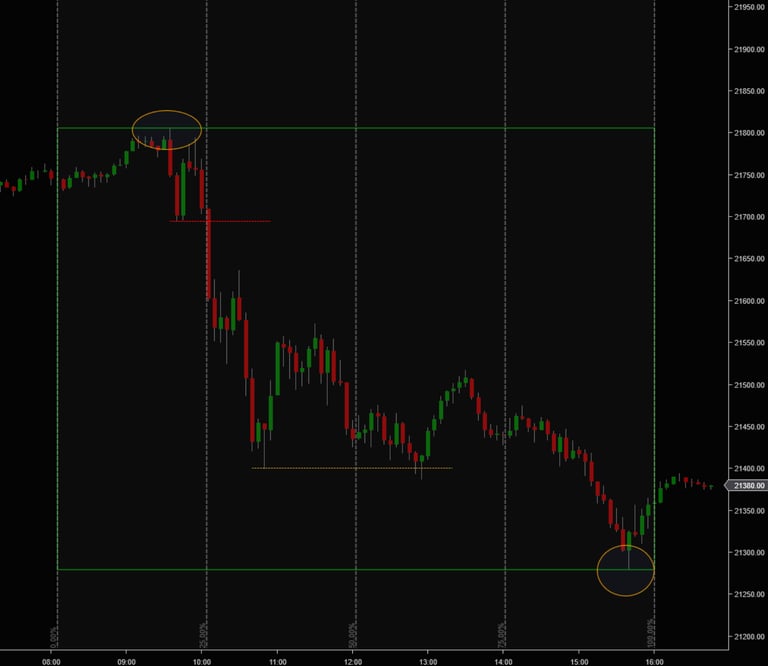Noon Curve
"Noon Curve" is a concept, specific to the NY session, that looks at price in relation to the left side of 12pm and the right side of 12pm. It highlights the price expectancy for each given half.
The below metrics were calculated from a 20yr sample, 2004-2024. Times listed are in Eastern Standard.
Candles are created with four pieces of information. The open, high, low and the close. These either get created as OHLC or OLHC. This entails that the candle opens, sets a high or low, expands a bit, than sets the opposite high/low and closes. If the only ingredients to this are price, than time is arbitrary and any duration of time can be used to create a candle of the users desire.
Specifically, for the noon curve, we are looking at a synthetic candle created during the hours of 8am to 4pm ET. This creates a custom 8 hour candle, with 12pm being the middle of the candle, as it relates to time.
If we expect a low and a high to form within this synthetic candle, what are the probabilities the two form on the same side, the AM side (8am-12pm) or the PM side (12pm-4pm). What about the probability of the high and low forming on opposite sides of the 12pm mid-point?
Looking at 20yrs of data...


What does this look like on a chart?


So if the 8am-4pm session has a high and low on opposite sides 74.3% of the time, there is an expectancy of price to set the opposite on the PM side if you believe a specific one is already formed on the AM side.


Additionally, we can look at how far from the 8am open these highs and lows form, giving us not only a time statistic but a price statistic. Click to enlarge.


We now have data that shows historically, the optimal time for these highs and lows to form, the optimal movement away from the 8am open that these highs and lows form, and confluences from quarterly expectations. This information can help you frame trade ideas and additionally help you with price expectations for positions you may be carrying into the lunch hour, past 12pm.

Defining the "Noon Curve"
We can also take it a step slightly further and see what the most common times are to set these highs and lows. Click to enlarge.
High and Low Formation Times
High and Low Formation Distance
Noon Curve Quarterly Confluence
One final piece to the puzzle is quarterly confluences. Since the Noon Curve time window is 8am to 4pm est, this provides 4 quarters, each 2 hours long. These quarters are as follows:
1st Quarter = 8am to 10am
2nd Quarter = 10am to 12pm
3rd Quarter = 12pm to 2pm
4th Quarter = 2pm to 4pm
What is the probability that quarter 1 sets the high or low for AM session?
For days where there was a new PM high, meaning the low was set in AM
Historically, 66% of the time quarter 1 set the AM low
For days where there was a new PM low, meaning the high was in AM
Historically, 68% of the time quarter 1 set the AM high
Ok but what does this mean? Well if there is a high and low established in quarter one, and quarter 2 breaks the quarter 1 low as shown by the red line in the chart below, than we should expect that most of the time this means there will be a new PM low, since quarter one sets the AM high or low the majority of the time.
Note in the chart below how the golden line low is broken for a new PM low, completing the Noon Curve.


